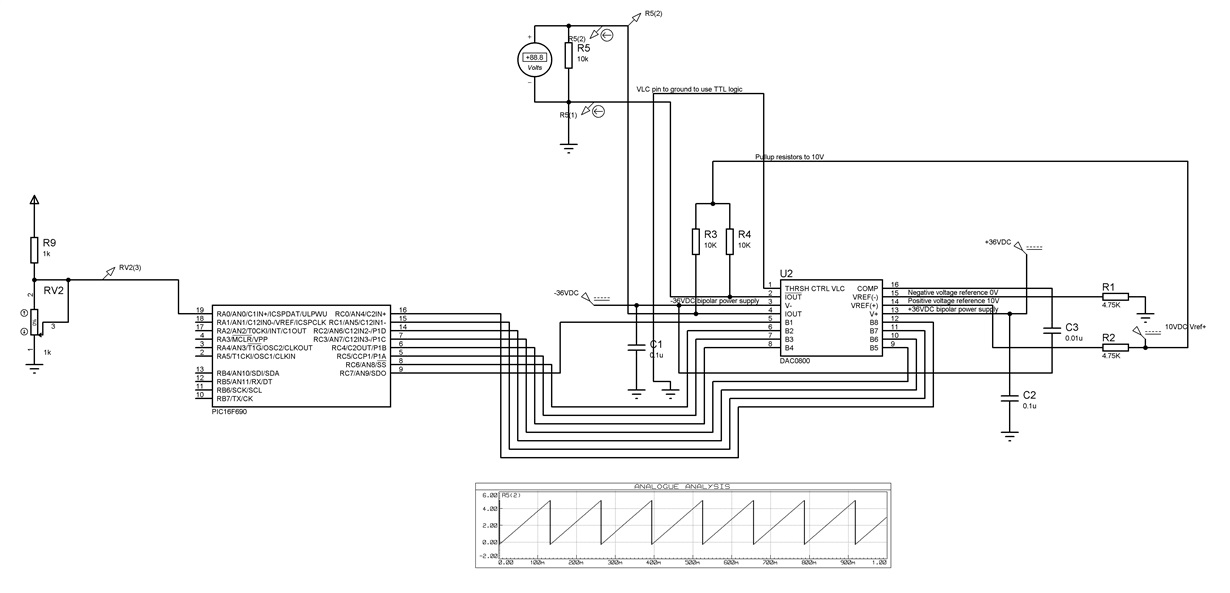Can you tell me more about this device. I am trying to output a digital signal (8-bit) to the DAC and get the corresponding analog signal. When I output "127", I get "0V" from the DAC, when I output "0", I get "5V" from the DAC. Is this do to the formatting? I couldnt find it in the datasheet, can you please tell me what the formatting is? Why isnt it a simple binary format? Is there any way to change the reference voltage to "0V" and "5V" instead of "0V" and "10V", so I get "5V" when I input "255" to the DAC?
I have made a circuit with PIC16F690 and DAC0800 (its in the attachments), but I get a bad result from the DAC as output voltage. For "127" output from the MCU I get "0V", for "0" I get "5V". The idea is to sample a signal from the in-built ADC and output the same signal to the DAC. The ADC and MCU part are working OK. But can someone tell me, why do I get this error from the DAC? Like this when I increase the ADC input, the DAC output gets decreased and when I decrease the ADC input, the DAC output gets increased.
I can solve it by coding, but I want to know is this the proper way and what am I mistaking? I used the datasheet to build the circuit.
Vref+ = 10V
Vref- = 0V
V+ = 36V
V- = -36V
THRSH control pin = ground so I can use TTL logic.
B1 (DAC PIN) = MSB (RC7 on PIC16F690)
B8 (DAC PIN) = LSB (RC0 on PIC16F690)
The analog peripherals of the MCU are disabled in order for the PINs RC0, RC1, RC2 to be used as digital (comparator, comparator, CVref).
Can anyone help me please?
Circuit:
-
Ask a related question
What is a related question?A related question is a question created from another question. When the related question is created, it will be automatically linked to the original question.

